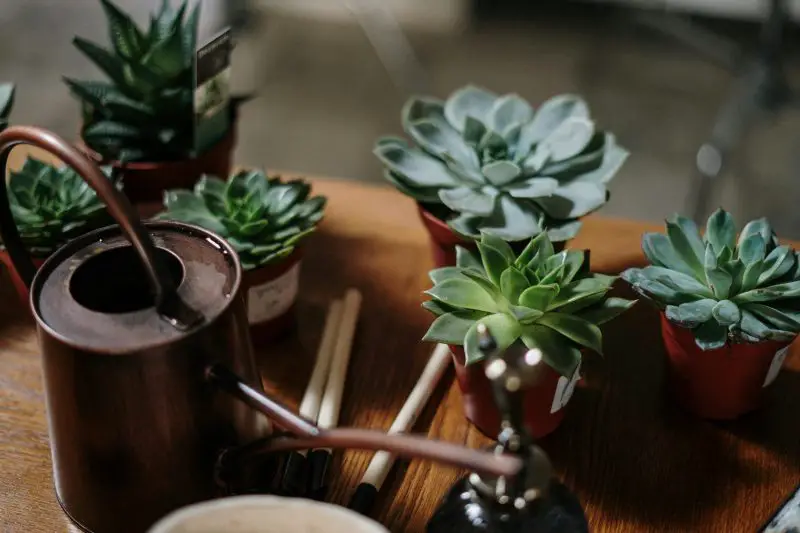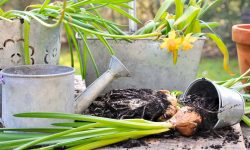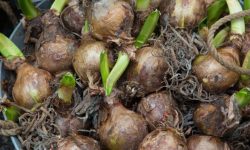Watering succulents may seem simple, but it’s often where even experienced gardeners go wrong. These hardy, drought-tolerant plants store moisture in their leaves and stems, so they don’t need frequent watering—but they do need consistency. Understanding how often to water succulents safely year-round in any climate is key to keeping them healthy, vibrant, and rot-free.
Whether you’re growing succulents in a dry desert or a humid tropical zone, this guide will help you adapt your watering routine to seasonal changes and local weather conditions. With the right balance of moisture, light, and timing, you’ll learn how to propagate succulents successfully and keep your collection thriving throughout the year.
Understanding Succulent Water Needs

To water succulents correctly, you first need to understand how these unique plants manage moisture. Succulents are native to arid and semi-arid environments, where rainfall is infrequent but often heavy when it does occur. As a result, they’ve evolved to store water in their thick leaves, stems, or roots, allowing them to survive extended dry periods.
Unlike other houseplants, succulents don’t thrive on routine watering schedules. Instead, they rely on their internal moisture reserves and prefer to dry out completely between waterings. Overwatering can lead to root rot—a common cause of succulent decline—while underwatering can cause shriveling and stunted growth.
Recognizing signs of stress, such as wrinkled leaves from underwatering or mushy, yellowing leaves from excess moisture, will help you fine-tune your care. By observing your plant’s response to its environment and adjusting your watering habits accordingly, you can meet its needs more effectively and avoid common mistakes. Understanding this balance is the foundation for learning how often to water succulents safely year-round in any climate.
General Watering Guidelines for Succulents
When caring for succulents, the golden rule is to water deeply but infrequently. This means thoroughly soaking the soil until water drains out from the bottom of the pot, then allowing the soil to dry out completely before watering again. This mimics the natural rainfall patterns succulents experience in their native habitats and helps encourage deep, healthy root growth.
The type of soil also plays a key role. Use a well-draining cactus or succulent mix to prevent water from pooling around the roots. Succulents sitting in soggy soil are highly prone to root rot, so even occasional overwatering in poor soil can be fatal. Containers with drainage holes are essential for success.
In general, most succulents need to be watered every 7–14 days during their active growing season in spring and summer. In fall and winter, when most succulents enter dormancy, watering should be reduced to once every 3–4 weeks or even less, depending on humidity and temperature.
By following these general guidelines and adjusting based on your environment and specific succulent species, you’ll be well on your way to learning how often to water succulents safely year-round in any climate.
How Climate Affects Watering Frequency
Climate is one of the most important factors influencing how often to water succulents safely year-round in any region. Succulents thrive on a balance between moisture and dryness, and that balance shifts dramatically depending on the environment.
In hot, dry climates, succulents may need to be watered more frequently, sometimes every 4 to 7 days during summer, especially if grown outdoors or exposed to full sun. High temperatures and low humidity cause water to evaporate quickly from both the soil and the plant itself. You’ll need to monitor the soil moisture closely and adjust based on how fast it dries out.
In contrast, cooler or more humid climates slow down evaporation, which means the soil stays wet longer. Overwatering is more likely in these conditions, so watering every 2 to 4 weeks may be enough. In very humid regions, good airflow and proper soil drainage become even more critical to prevent fungal growth and root rot.
During rainy seasons, especially in tropical or subtropical areas, succulents may not need supplemental watering at all if they’re grown outdoors. Always check soil moisture before watering—just because it’s watering day doesn’t mean your succulent actually needs it.
By tailoring your watering routine to your local climate, you’ll prevent common issues like rot and dehydration, helping your succulents thrive throughout every season.
Seasonal Watering Adjustments for Succulents
Spring and Summer
These warmer months mark the peak of your succulents’ growth cycle, which means their need for water increases. With longer daylight hours and more active photosynthesis, the soil tends to dry out faster. In well-draining soil, most succulents benefit from being watered once every 5 to 10 days, depending on climate and exposure. Outdoor succulents in full sun or breezy spots often dry out more quickly than those in shaded areas. Container-grown succulents are especially vulnerable to drying out, so check the soil frequently by pressing your finger into the top inch. If it’s dry, it’s time to water. Just be sure the pot has excellent drainage to avoid soggy roots.
Fall and Winter
As temperatures drop and light levels decrease, most succulents naturally enter a dormant or semi-dormant state. Their metabolic activity slows down, and so does their water uptake. Watering too frequently during this time is one of the most common mistakes succulent owners make. Indoors, succulents might only need watering every 3 to 4 weeks, or even less, especially if they’re kept in cool rooms with minimal sunlight. If your succulents are outdoors in areas with seasonal rain, they may not need any watering at all. Always check that the soil is bone dry before rewatering. During dormancy, a cautious approach is key—less water is much safer than too much.
How Indoor and Outdoor Conditions Change Watering Needs
Indoor Succulents
Indoor succulents typically require less frequent watering because they receive lower light levels and experience more stable temperatures compared to outdoor plants. However, factors like central heating or air conditioning can dry out the air and soil more quickly, especially in winter, increasing water needs temporarily. It’s important to monitor soil moisture carefully—avoid watering if the soil still feels even slightly damp to prevent root rot. Ensuring your pots have drainage holes helps excess water escape, reducing the risk of waterlogged roots. Indoor environments also tend to have less airflow, so this slower evaporation affects how often you should water.
Outdoor Succulents
Succulents grown outdoors face varying environmental conditions that strongly influence their watering requirements. Exposure to rainfall can naturally meet their water needs during wet seasons, often eliminating the need for additional watering. Conversely, dry spells, intense sunlight, wind, and heatwaves increase evaporation and plant water use, making frequent watering necessary. Outdoor succulents in containers dry out faster than those planted in the ground due to limited soil volume. Gardeners should adapt watering routines based on current weather patterns and closely observe their plants for signs of thirst or stress. Flexibility and responsiveness to changing outdoor conditions are key to keeping succulents healthy year-round.
Signs You’re Watering Succulents Too Often
Overwatering is one of the most common mistakes when caring for succulents, and it often leads to serious problems. One of the earliest signs is yellowing or translucent leaves that feel soft or mushy to the touch—this usually indicates the beginnings of root rot caused by excess moisture. Succulents may also drop leaves more frequently than usual as their roots become damaged and unable to support healthy growth.
Another clear warning is soil that remains constantly wet or soggy for days after watering. This environment encourages fungal growth, which can appear as mold or mildew on the soil surface or the base of the plant. Overwatered succulents may also develop a swollen, bloated appearance, which signals that the cells are waterlogged and stressed. Growth tends to slow down or stop entirely because damaged roots cannot take up nutrients efficiently.
If you notice any of these symptoms, it’s essential to adjust your watering routine immediately—allow the soil to dry out completely between waterings and ensure your container has good drainage. Early intervention can often save your succulent from irreversible damage and help it return to healthy growth.
Signs You’re Not Watering Enough
When succulents don’t receive enough water, they show clear signs of dehydration and stress. One of the first symptoms is shriveled or wrinkled leaves, which lose their plumpness as the plant uses up stored moisture. These leaves may also become dry, brittle, or curl inward, signaling that the succulent is struggling to retain water.
In addition to leaf shriveling, growth may slow down significantly or stop altogether. Succulents need adequate water to support new leaf and root development, so a lack of moisture can cause stunted growth and smaller-than-normal leaves. Some varieties might also lose their vibrant color, becoming dull or faded as they conserve resources.
If dehydration continues, older leaves may drop prematurely as the plant sacrifices parts to protect the core. The stem can also become thin and weak. When you notice these signs, it’s time to increase watering gradually—soak the soil thoroughly but allow it to dry out completely before watering again. Proper hydration will help your succulent regain its healthy, firm appearance and promote active growth.
Best Practices to Water Succulents Safely
To water succulents safely, use the “soak and dry” method: water deeply until excess drains out, then let the soil dry completely before watering again. Avoid getting water on leaves to prevent rot and fungal issues.
Watering in the early morning is best, as it allows moisture to evaporate during the day. Always check soil moisture by feeling an inch below the surface before watering again. Ensure pots have drainage holes to avoid waterlogging.
Adjust watering based on the season and plant activity—less water during dormancy and more during growth—to keep your succulents healthy year-round.
Adapting to Rainy or Dry Seasons
Succulents are sensitive to changes in moisture, so adapting your watering routine during rainy or dry seasons is crucial. During rainy periods, especially outdoors, reduce or completely stop watering to prevent waterlogged soil and root rot. Ensure your pots or garden beds have excellent drainage to avoid standing water.
In dry seasons or droughts, succulents may need more frequent watering to compensate for the lack of natural moisture. Monitor soil dryness closely and increase watering intervals as needed, but still follow the soak-and-dry principle to prevent overwatering. Mulching with gravel or stones can help retain soil moisture in dry conditions, protecting your plants from extreme stress.
How to Water Succulents in Different Growing Mediums
The type of growing medium you use greatly affects how often and how much you should water your succulents. In well-draining soil mixes designed for succulents or cacti, water drains quickly, so you can follow the typical soak-and-dry method without much worry. These soils help prevent water from lingering around the roots, reducing the risk of rot.
If you use heavier or more moisture-retentive soils, such as regular potting soil mixed with organic matter, watering should be less frequent. These mediums hold water longer, so the soil may stay damp for several days after watering. Check the moisture level carefully before watering again to avoid overwatering.
For succulents planted in containers without drainage holes, water sparingly and only when the soil is completely dry. Overwatering in these setups is a common cause of root rot, so it’s best to use the driest soil possible and consider repotting into containers with drainage to improve plant health.
The Role of Sunlight and Airflow in Watering
Sunlight greatly affects how quickly succulent soil dries. In bright, direct sunlight, soil dries faster, so succulents need more frequent watering. In shaded or low-light areas, soil stays moist longer, so watering should be reduced to prevent root rot.
Airflow helps remove excess moisture from soil and leaves, reducing risks of fungal infections and pests. Poor ventilation can cause lingering dampness, encouraging disease.
Positioning succulents where they get plenty of sunlight and good air circulation helps maintain healthy moisture levels. This balance supports strong roots and vibrant growth while preventing common watering issues.
When to Adjust Watering for Propagated Succulents
Propagated succulents, such as leaf or stem cuttings, have different watering needs than established plants. Initially, they require minimal moisture to prevent rot while roots are developing. Mist the soil lightly rather than watering thoroughly until roots form, which can take several weeks.
Once new roots and growth appear, gradually increase watering frequency but still allow the soil to dry out between sessions. Overwatering during early stages can easily cause failure, so careful monitoring is essential.
As the propagated succulents mature and develop a stronger root system, adjust watering to match their specific growth phase, environment, and the season. This gradual approach ensures healthy, vigorous plants without risking water-related problems.
Frequently Asked Questions (FAQ) About Watering Succulents Safely Year-Round
How often should I water succulents during different seasons?
In spring and summer, water succulents about once a week when they are actively growing. During fall and winter, when growth slows or stops, reduce watering to once every three to four weeks to prevent overwatering and rot.
What are the signs that I am overwatering my succulents?
Overwatered succulents often have soft, mushy, or yellowing leaves. The leaves may appear translucent, and the plant may begin to drop leaves or smell musty due to root rot developing below the surface.
How do indoor and outdoor conditions affect succulent watering needs?
Indoor succulents in stable environments usually need less frequent watering, while outdoor succulents may need more water during dry, windy, or hot periods. Humidity, temperature, and sunlight all affect how fast the soil dries out.
Can the type of soil or container impact how often I should water succulents?
Absolutely. Well-draining soil and pots with drainage holes allow excess water to escape, reducing the risk of rot. Terracotta pots dry out faster, which may require slightly more frequent watering than plastic or glazed containers.
How should I water newly propagated succulents compared to mature plants?
Newly propagated succulents should be misted lightly and only occasionally until roots begin to grow. Once established, transition to regular deep watering with time for the soil to fully dry between sessions, just like mature succulents.
Final Thoughts on Watering Succulents Year-Round
Learning how often to water succulents safely year-round in any climate takes time, observation, and a willingness to adapt. There is no one-size-fits-all rule, but with attention to climate, season, and plant behavior, you can create a routine that promotes healthy growth without risk of overwatering.
Whether you’re caring for a single jade plant on your windowsill or managing a full succulent garden, the principles remain the same: allow the soil to dry, avoid stagnant moisture, and adjust your watering with the seasons. With these habits, your succulents will not only survive—they’ll thrive.






